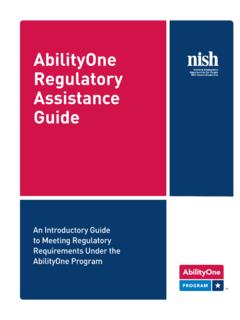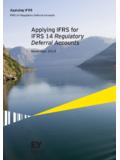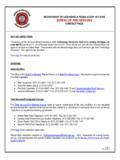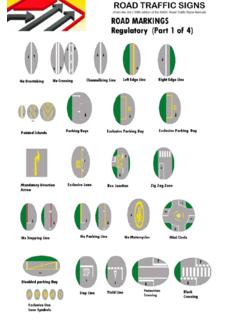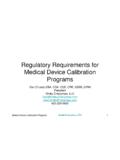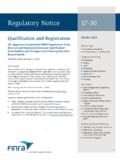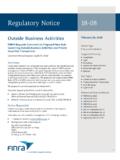Transcription of Food Safety Policies and Regulatory Frameworks
1 1of 19 FAO 2009 Resources for policy makingFood Safety Policies and Regulatory resources See all material prepared for the FAO Policy Learning Programme See the FAO Policy Learning Website: the food AND AGRICULTURE ORGANIZATION OF THE UNITED NATIONS2of 19 FAO 2009 Resources for policy makingCatherine Bessy, food Quality and Standards Service, Nutrition and Consumer Protection DivisionFood Safety Policies and Regulatory FrameworkAbout EASYPol The EASYPol home page is available at: presentation belongs to a set of modules which are part of the EASYPol Resource package: FAO Policy Learning Programme: Specific policy issues: food Safety Policies and Regulatory frameworksEASYPol is a multilingual repository of freely downloadable resources for policy making in agriculture, rural development and food security.
2 The resources are the results of research and field work by policy experts at FAO. The site is maintained by FAO s Policy Assistance Support Service, Policy and Programme Development Support Division, FAO. FAO 20093of 19 Resources for policy makingOutlineInternational framework for food Safety : Codex Alimentarius Use of Codex at national level and National food Control SystemsGuiding principles for food Safety Policies FAO 20094of 19 Resources for policy makingAfter reading this module, you should know about:The international Regulatory framework for food safetyThe food Control Systems and the guiding principles for ensuring a safe food supplyObjectives FAO 20095of 19 Resources for policy makingCodex Alimentarius Commission (CAC)What is the CAC?
3 A Joint FAO/WHO inter-governmental body with 176 member countries (as of July 2008) plus observersResponsible for implementing FAO/WHO Joint food Standards Programme since 1962 Main functions of the CACTo protect the health of consumersTo ensure fair practices in the food tradeTo coordinate food standards work internationallyTo finalise and publish international standards, codes of practice and recommendations in the Codex Alimentarius FAO 20096of 19 Resources for policy makingCodex Alimentarius means food Code Comprises 14 volumesAll standards available at Codex web-siteCodex standards are recommended (not mandated) food quality and Safety Codex Alimentarius FAO 20097of 19 Resources for policy makingCAC Secretariat is located at FAO HeadquartersRules and procedures for CAC and its constituent bodies are outlined in the Procedural for elaborating standards facilitates broad stakeholder inputExecutive CommitteeSecretariatGeneral Committees(9)Commodity Committeesand Task ForcesRegional Committees(6)
4 CodexAlimentarius CommissionCAC Structure and Procedures FAO 20098of 19 Resources for policy makingIndustry GroupsConsumer GroupsNational GovernmentsCodex Alimentarius Commission/Codex SecretariatScientific communityContact PointNational CodexNational Codex CommitteeNational Codex Structures FAO 20099of 19 Resources for policy makingRecognize the problemUnderstand the problemDeal with the problemChecks to be sure that the problem has been dealt with efficientlyIntuitive approach to a food Safety problem FAO 200910of 19 Resources for policy makingFood law, regulation, and standards (make use of Codex) food Safety control management Inspection services Laboratory servicesMonitoring Surveillance of food borne diseases Capacity for emergency responseTraining Public information, education and communicationEssential food control componentsSystem to recognize/solve problems FAO 200911of 19 Resources for policy makingOutdated or incomplete food laws and regulationsAbsence of a national food control strategy, poorly defined and overlapping mandates among agencies involvedLimited infrastructure, equipment, supplies, skilled personnelInadequate scientific and technical resources for food inspection and complianceLimited knowledge about, and ability to comply with.
5 food quality and Safety assurance systemsWeak capacity to participate fully in international bodies and agreements governing trade in foodChallenges facing national food control systems FAO 200912of 19 Resources for policy makingExisting parameters directly or indirectly related that may influence the implementation of the policy such as : Decentralization policy: that may confer to decentralized bodies (such as. Municipalities) a responsibility in food control, Export promotion strategies: that may include activities like bringing laboratories to accreditation or setting up accreditation bodiesEducation programmes: where synergies can be leveraged when to comes to awareness raising about food hygiene issuesResearch programmes: that may includes themes regarding improving traditional food handling or storage conditions food Safety Policies are not to be conceived in isolation (1/2) FAO 200913of 19 Resources for policy makingEnvironmental sustainability.
6 That may include components directly or indirectly related to food Safety such as organic farming, POPs integrated pest management Development Policies : that may contain mentions to agriculture inputs supplyFood security Policies : that may include actions aiming at improving food safetyLand tenure legislation: that may influence greatly growers efforts to implement GAPFood Safety Policies are not to be conceived in isolation (2/2) FAO 200914of 19 Resources for policy makingFood Chain approachFood Safety is not a static, permanent attribute of the Safety requires all players involved along the food chain ( food producers, processors, retailers and households) to recognize their primary responsibility and to share a common goal.
7 Ensure safe food at all steps of the chainCan materialize through good practices (GHP, GMP, GAP) and monitoring systems ( HACCP)Guiding principles to be reflected in a food Safety policy (1/4) FAO 200915of 19 Resources for policy makingGuiding principles to be reflected in a food Safety policy (2/4)Risk based approachConduct risk analysis (risk assessment, risk management and risk communication) Develop science-based strategies Maximize risk reductionHelps make decisions in proportion to public health risksEstablish risk-based priorities Integrated, economically feasible initiativesEnsure transparency FAO 200916of 19 Resources for policy makingGuiding principles to be reflected in a food Safety policy (3/4)TransparencyHelps stakeholders to contribute effectivelyto decision makingImproved efficiency and complianceBuilds consumer s confidencein the Safety and quality of food supplyImproved communication of food Safety information(science based information to clear up the unjustified fears sometimes spread by the media)
8 TraceabilityKeeping recordof all operations/inputs during productionAllows tracing back source of contamination or disease, identifying contaminated/infected products and subsequently applying control measuresCosts can be high for producersHelps differentiatefoods FAO 200917of 19 Resources for policy makingGuiding principles to be reflected in a food Safety policy (4/4)Contingency planningWell established product recallsystemsEstablished procedures for containment, quarantine and/or eradication in case of spread of pest/diseaseClear attribution of rolesin case of emergency, lines of authority and coordination mechanismsTrainingof the persons involved in the plan and periodic drillsWell established communication channelsSecure a budget for emergencies(provisions)
9 Revise the planin line with progress in techniques and /or knowledge as wall as similar experiences in other countries FAO 200918of 19 Resources for policy makingConclusionsWTO agreements have deeply modified the food control practicesGlobal trend towards harmonization and transparencyDeveloping countries must reinforce their participation in these negotiations fora (Codex, SPS and TBT Committees) Importance to set up effective and modern food Control Systems: Structure is less important that interaction and coordinationFocus is on preventionNot only science based, but also risk based FAO 200919of 19 Resources for policy makingUseful links ..FAO (AGNS) food Safety web site web website and TBT agreements #annex3










